The Roles Of Cannabis Macronutrients And Micronutrients
Published : Dec 9, 2019

Cannabis plants need to eat to survive, so they take up minerals from the soil through their roots. Some of these minerals are needed in large quantities, whereas others are needed only in trace amounts. Find out why all of these minerals are important in the cannabis plant's development.
Cannabis plants are living, breathing organisms, and just like us, they need food to grow. Every time we devour a meal, our digestive system extracts the nutrients we need to survive. Plants also require a specific array of nutrients to function correctly. They breathe in carbon through their leaves and uptake everything else they need from the soil.
Plants draw up nutrients through their roots. They do this through a process known as active transport. In biology, substances naturally flow from an area of high concentration to low concentration—this principle is known as diffusion. However, an organism can use cellular energy (known as ATP) to reverse the direction. Because it is actively using its own energy to make this happen, it's known as active transport.
For a cannabis plant to draw in minerals from the soil, it must move hydrogen ions into the roots. From here, the root hairs pump them into the soil. These ions displace minerals found in soil particles, which are then moved into the roots using molecular pumps.
MACRONUTRIENTS VS. MICRONUTRIENTS
Cannabis plants use this fascinating process to move a whole host of nutrients into their roots. Their diet consists of two primary categories: macronutrients and micronutrients. In a way, this is similar to our own food intake. We require macronutrients (the food we need in large quantities) in the form of protein, carbohydrates, and fat. We also need essential micronutrients (substances we require in small quantities) such as vitamins and trace minerals.
Cannabis plants need three minerals in massive quantities: nitrogen (N), phosphorus (P), and potassium (K). These three minerals appear on fertiliser product labels as an N-P-K ratio. Plants also require calcium, magnesium, and sulphur in relatively large amounts. They need them in much higher quantities than most micronutrients, but significantly lower quantities than NPK. For this reason, they are secondary macronutrients.
This brings us to the micronutrients. Plants only need these elements in small quantities, but they are of equal importance. Micronutrients include boron, chlorine, copper, iron, manganese, molybdenum, and zinc.
Cannabis plants need to have access to all of these minerals. If a single one is missing, plants will start to show signs of deficiency. If growers don't meet these demands, yields will suffer.
In this article, we'll touch on every single one of these nutrients in detail. You'll learn why each one is important, and the role they each play in the physiology of the cannabis plant.
PRIMARY MACRONUTRIENTS

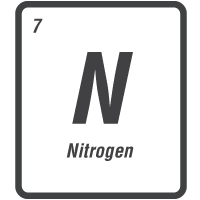 NITROGEN
NITROGEN
Nitrogen is a key macronutrient in plants. It's considered the most important component for plant growth. So, what's the big deal?
Nitrogen forms part of the chlorophyll molecule—the chemical that gives plants their green colour. The molecule is created within the chloroplasts of plant cells and is needed to absorb sunlight. Without chlorophyll, plants wouldn't last very long. Once sunlight is absorbed, plants use this energy in the creation of vital sugars.
Nitrogen is also a major component of plant protoplasm. The protoplasm is the living content of a plant cell that is held in place by a plasma membrane. It's a bustling area full of key nutrients such as amino acids, sugars, water, lipids, and nucleic acids.
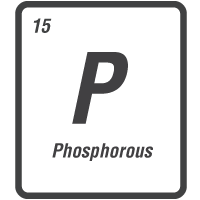 PHOSPHOROUS
PHOSPHOROUS
As one of three macronutrients, phosphorus is, of course, essential to plant development. The mineral is required for normal plant growth and maturity, and plays a critical role during photosynthesis, respiration, and energy storage.
Phosphorus is a vital component of ATP, the cellular currency of energy. ATP is the result of photosynthesis, and plants use the molecule for many chemical reactions.
Phosphorus also plays an important role in plants at the genetic level. It helps to form DNA (molecules that contain the genetic code of a plant) and RNA (molecules that copy and transfer the code within DNA).
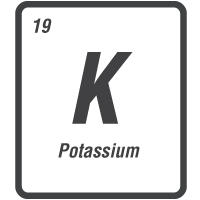 POTASSIUM
POTASSIUM
Potassium is the final primary macronutrient in our lineup. This mineral fulfils numerous key physiological functions. Potassium helps regulate CO₂ uptake in plants by opening and closing the stomata—small holes located on stems and leaves. By enabling these pore-like structures to open, potassium causes carbon dioxide to enter and oxygen to leave. Because plants use CO₂ during photosynthesis, potassium is also vital in this energy-forming process.
The mineral is also used in plants to activate enzymes that are important in the production of ATP.
SECONDARY MACRONUTRIENTS

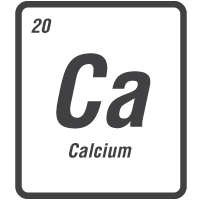 CALCIUM
CALCIUM
Calcium plays an important structural role in plants. The mineral contributes to the integrity of cell walls and membranes. Calcium also plays the role of an intracellular messenger, enabling plants to respond to developmental cues and environmental challenges.
Because calcium is a structural component, the lack of it can become very apparent. When plants are deficient in calcium, old leaves begin to die off and plants take longer to flower. New tissue growth, such as root tips and young leaves, will also exhibit distorted growth.
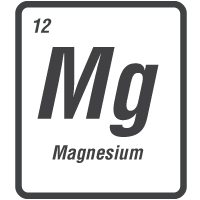 MAGNESIUM
MAGNESIUM
Magnesium is one of the most important nutrients when it comes to photosynthesis. The metallic element is the powerhouse behind the process and exists in the heart of the chlorophyll molecule. Without it, plants would not be able to capture light energy.
Plants use magnesium for more than energy processing, such as to metabolise sugars and stabilise cell membranes.
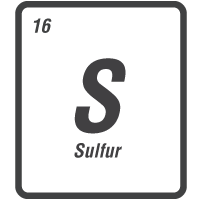 SULPHUR
SULPHUR
Sulphur is another important structural mineral in plant physiology. It assists in the formation of proteins—molecules used to form hormones, enzymes, membrane channels, and pumps.
MICRONUTRIENTS

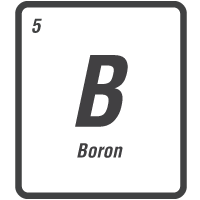 BORON
BORON
Alongside calcium, boron is a vital structural component of cell walls. Boron is also directly involved in plant growth as it's essential for cell division. The nutrient is crucial during reproduction, especially during flowering.
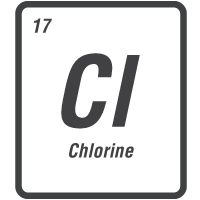 CHLORINE
CHLORINE
Cannabis plants require small yet optimal amounts of chlorine to remain healthy. The nutrient helps keep their leaves firm and strong. Chlorine also assists in photosynthesis and plays a part in the opening and closing of stomata.
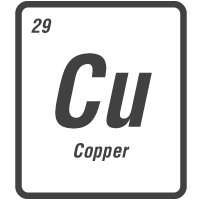 COPPER
COPPER
Copper plays the role of an activator within cannabis plants. It activates key enzymes that catalyse and speed up chemical reactions. Some of these enzymes are involved in the synthesis of lignin—a structural material that comprises the support tissues of vascular plants.
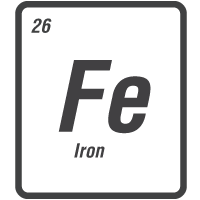 IRON
IRON
Without adequate levels of iron, plants turn from a luscious green to a sickly yellow. This is because the nutrient is involved in the production of chlorophyll, which gives plants their delightful green colour. Plants also need iron to form enzymes, produce energy, and reduce nitrate and sulfate levels.
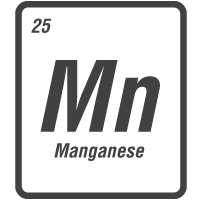 MANGANESE
MANGANESE
Manganese contributes to essential survival processes and also helps to fight off disease. It's intimately involved in photosynthesis, respiration, and nitrogen assimilation. The nutrient is also required during root cell elongation and helps to protect roots against pathogens.
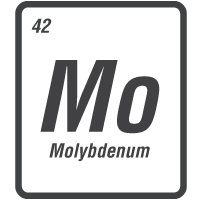 MOLYBDENUM
MOLYBDENUM
Plants only need molybdenum in super small quantities. However, its role should not be underestimated. Without molybdenum, plants would have a hard time making proteins. The nutrient forms part of two enzymes that convert nitrate into nitrite, and nitrite into ammonia to synthesise amino acids. Molybdenum is also used in the conversion of inorganic phosphorus into organic forms.
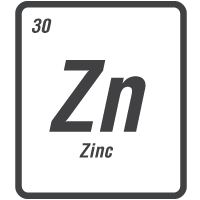 ZINC
ZINC
If you want your cannabis plants to exhibit healthy growth and optimal size, you'll need to meet their zinc demands. Fortunately, plants don't require much zinc at all. The little they do need is used to build enzymes, proteins, and growth hormones. Zinc is also crucial in internode elongation.






































